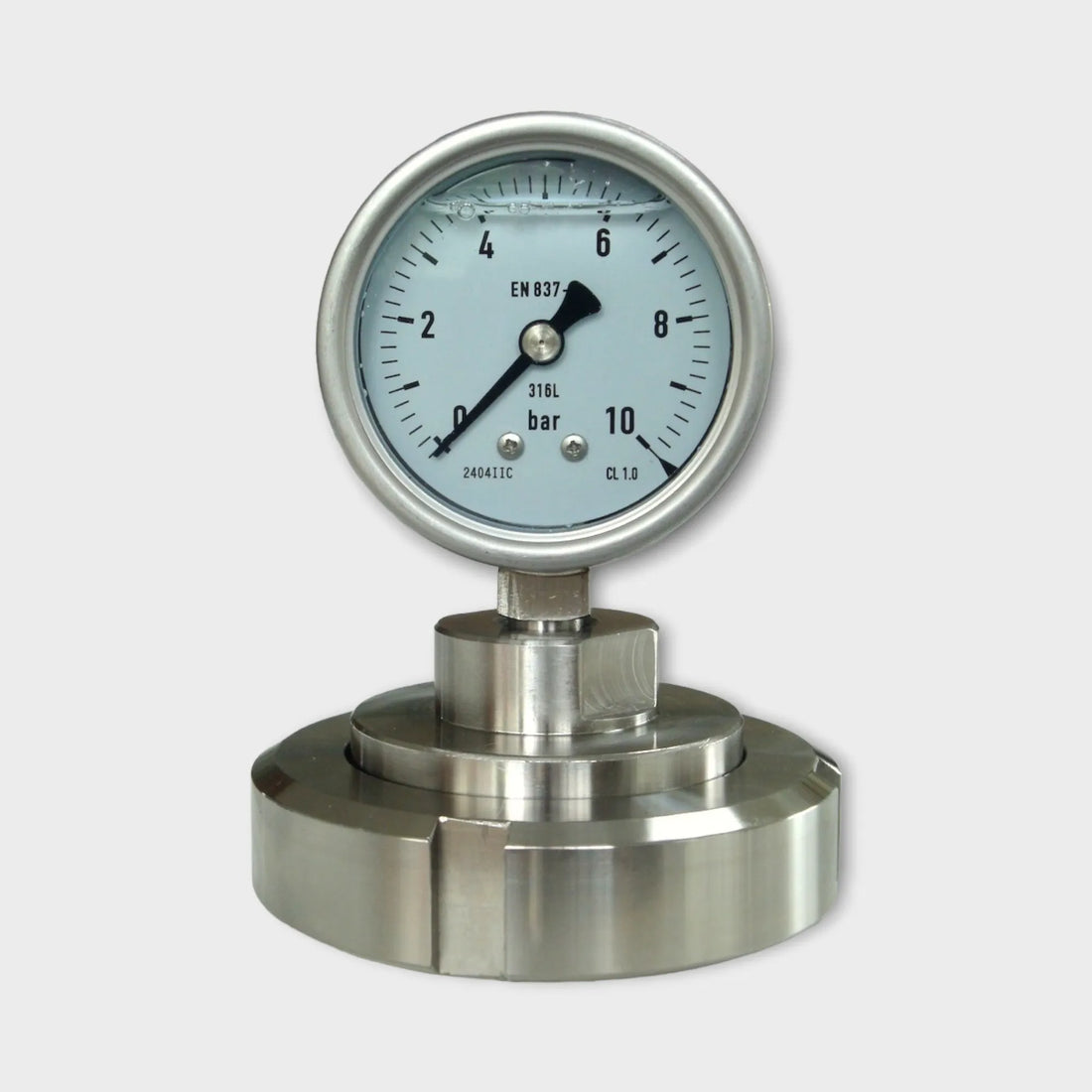A diaphragm seal pressure gauge is used to measure pressure accurately and reliably in liquids, gases, and vapors. It works by using a diaphragm to separate the measuring medium from the instrument that measures it, allowing for more accurate readings than traditional gauges. Learn about the working principle and uses of this type pressure gauges here.
What is a Diaphragm Seal Pressure Gauge?
A diaphragm seal pressure gauge is an instrument used to measure pressure in liquids, gases, and vapors. It uses a diaphragm of varying thickness between the measuring instrument and the medium in order to isolate the device from its environment and prevent errors in measurements due to temperature variations or other factors. This allows for more reliable and accurate readings than traditional mechanical gauges such as bourdon or bellows gauges.
Working Principle of a Diaphragm Seal Pressure Gauge.
The diaphragm seal pressure gauge works by passing the process fluid through a thin diaphragm to a reference chamber. When the force of the process fluid is applied to one side of the diaphragm, the other side is exposed to atmospheric pressure. This creates a difference between the two sides, causing the measuring instrument to move, which then translates into an accurate pressure reading. Because the measurement excludes the effects of extreme temperatures, incompressible vapor, and other external factors, it gives more reliable readings.
Advantages of DIAPHRAGMs Seals over other pressure gauges.
Diaphragm seals offer many advantages over other type of pressure gauges, including improved accuracy, repeatability and reliability. The diaphragm acts as an isolator to separate the process media from the reference chamber, providing protection against process contamination. Also, since the diaphragm seals are resistant to heat and corrosion, they can measure in a wide range of temperature and pressure ranges. Furthermore, the self-compensating design reduces maintenance cost by eliminating manual recalibration.
Applications of Diaphragm Seals & Benefits to Industries.
Diaphragm seals are very popular in various industries such as pharmaceutical, chemical & petrochemical, oil & gas, and pulp & paper. They provide the advantage of improved accuracy and reliability for measurements. In addition to this, they also offer protection against process contamination by separating the process media from the reference chamber. Furthermore, with features such as self-compensating design, these diaphragm seals require minimal maintenance and reduce costs associated with manual recalibration.
Maintenance Tips & Suggestions for Long-Term and Accurate Readings.
Ensure that the process media and seals are compatible before using it. Regularly check if the gasket is in good condition so that it does not cause any leakage problems. Also, to maintain long-term accuracy of the diaphragm seal pressure gauge, make sure to take care regarding corrosion protection, such as regular servicing and proper installation. Additionally, replacing or cleaning the process side seal regularly will ensure consistent readings from the device. Lastly, avoid turbulent and high velocity flow of process media for accurate data readings.
References:
Diaphragm Seal - Wikipedia

